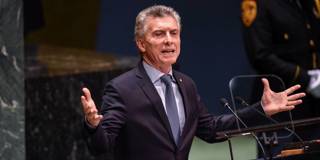Argentine President Mauricio Macri seems almost certain to lose his country’s presidential election next month, after committing the same kinds of economic-policy mistakes that so many of his Peronist predecessors made. It is a tragic and catastrophically disappointing denouement.
LONDON – Argentina has done it again: inflation is up, growth is down, and the peso has lost two-thirds of its value. Depositors have been rushing to withdraw their money from local banks, and a debt default looms. While Argentines suffer the consequences, the world emits a collective sigh of disbelief: wasn’t this time supposed to be different?

LONDON – Argentina has done it again: inflation is up, growth is down, and the peso has lost two-thirds of its value. Depositors have been rushing to withdraw their money from local banks, and a debt default looms. While Argentines suffer the consequences, the world emits a collective sigh of disbelief: wasn’t this time supposed to be different?